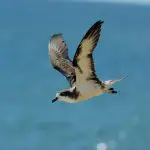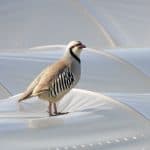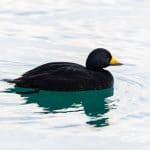Common Name: Gadwall
Scientific Name: Mareca strepera| Size | Diet | Range in Hawaii | Status in Hawaii |
|---|---|---|---|
| 20 in. - 22 in. | aquatic plants, seeds, and invertebrates | Oahu, Big Island | Least Concern |
Meet the Gadwall (Mareca strepera), a captivating duck that embodies both mystery and beauty. This unassuming waterfowl, with its subtle gray and brown plumage, holds a remarkable story to tell. While not native to Hawaii, the Gadwall has been occasionally spotted in this tropical haven, adding a touch of intrigue to the island’s avian landscape.
Join us as we unravel the secrets of the Gadwall and its surprising presence amidst Hawaii’s paradise.
Gadwall
Appearance
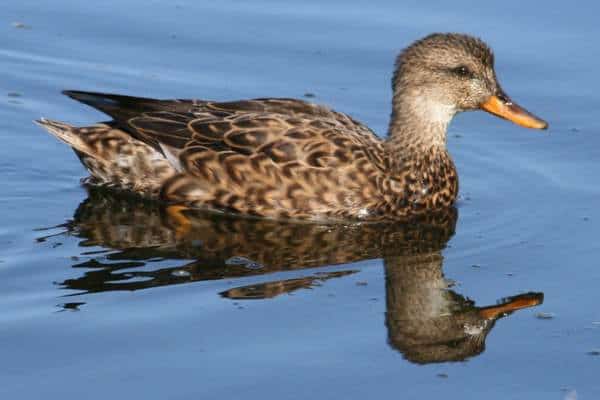
The Gadwall, a fascinating waterfowl, captivates with its unassuming yet striking appearance. With an average length of 20-22 inches (51-56 cm), this medium-sized duck showcases a palette of understated elegance. The male Gadwall boasts a finely barred body, complemented by a stunning cinnamon-colored head that adds a pop of warmth to its overall appearance.
In contrast, the female Gadwall exhibits a more modest attire, with a mottled brown plumage that seamlessly blends into its surroundings. Despite its unassuming nature, the Gadwall’s subtle beauty never fails to leave a lasting impression.
Diet
The Gadwall maintains a diverse and intriguing diet. With a keen eye for culinary delights, this dabbling duck possesses a versatile palate. Feeding on a variety of aquatic plants, seeds, and invertebrates, the Gadwall showcases its adaptability in search of nourishment.
Nesting
The Gadwall, a master of resourcefulness, approaches nesting with strategic precision. Seeking out secluded locations near water bodies, this clever waterfowl constructs its nest in dense vegetation or on the ground, carefully camouflaging it from prying eyes. The female Gadwall takes charge of nest-building, fashioning a sturdy structure using a combination of twigs, grass, and down feathers, creating a cozy sanctuary for her future brood.
With a touch of architectural finesse, she lines the nest with soft down feathers, ensuring a snug and comfortable environment for her precious eggs. Once the nest is complete, the female Gadwall lays a clutch of 8-12 eggs, patiently incubating them for around 25-28 days.
Throughout this period, the devoted mother diligently tends to her nest, diligently safeguarding the eggs and maintaining the ideal conditions for their development. Witnessing the Gadwall’s meticulous nesting habits is a testament to the species’ unwavering dedication to ensuring the survival of its young, showcasing nature’s remarkable ingenuity.
Behavior
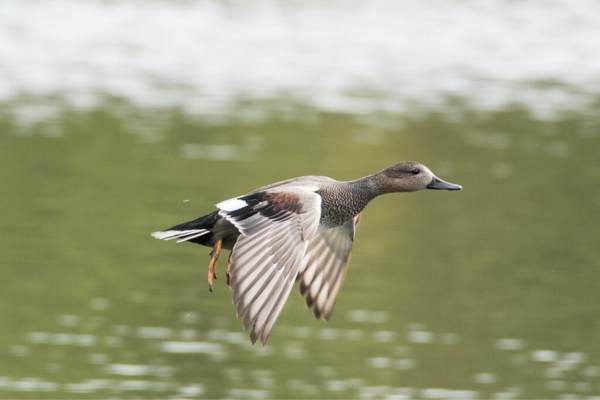
The Gadwall exhibits a range of captivating behaviors that highlight its adaptability and social nature. These ducks are often found in small to large flocks, gracefully gliding across water bodies in unison. When foraging, they engage in dabbling behavior, effortlessly dipping their heads underwater to feed on aquatic plants, seeds, and invertebrates.
What sets the Gadwall apart is its agile flight. With elegant wingbeats, they take to the skies, soaring with precision and grace. Their flight patterns are a spectacle to behold, as they effortlessly navigate through the air, showcasing their natural agility.
Additionally, the Gadwall is known for its distinctive vocalizations. While the males produce a low, hoarse quack, the females emit a softer, more raspy call. These vocal exchanges play a crucial role in communication, from courtship displays to maintaining social bonds within their flocks.
During the breeding season, the male Gadwalls engage in courtship rituals, showcasing their impressive plumage and engaging in elaborate displays to attract potential mates. These displays often involve bobbing their heads, puffing up their chests, and engaging in synchronized swimming movements.
While the Gadwall can be a social bird, it also values its personal space. They exhibit territorial behavior, defending their chosen feeding and nesting areas from intruders with determination.
Habitat
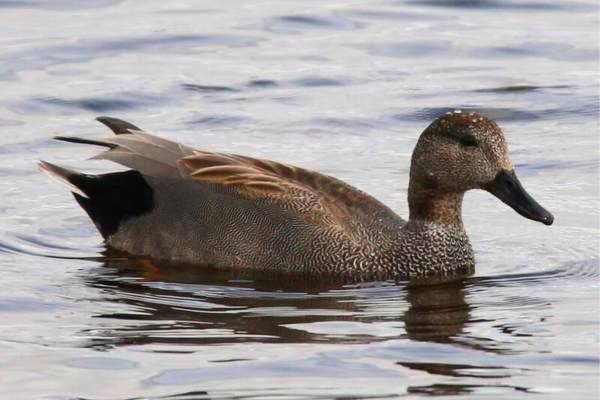
The Gadwall can be found in a wide range of habitats across the world. From serene wetlands to bustling lakes and even coastal estuaries, the Gadwall has made its mark in diverse ecosystems. These ducks have a particular affinity for shallow freshwater habitats, such as marshes, ponds, and small lakes, where they can easily access their preferred food sources.
Range
The Gadwall is not native to Hawaii, but has been introduced to the islands for recreational hunting purposes. The species has been observed on the islands of Oahu and Hawaii Island (the Big Island), but it is not clear how many individuals or populations exist in these locations.
The Gadwall is typically found in wetland habitats such as ponds, marshes, and reservoirs, and may form mixed-species flocks with other waterfowl species. While the presence of the Gadwall in Hawaii has been documented, it is important to note that non-native species can have negative impacts on native ecosystems and wildlife, and efforts are needed to monitor and manage their populations in Hawaii.
Conservation Status
The Gadwall is currently classified as a species of “Least Concern” on the International Union for Conservation of Nature (IUCN) Red List. This status reflects its relatively stable population and widespread distribution across its range.
Interesting Facts
1. Camouflaging Experts
The Gadwall’s mottled brown plumage serves as excellent camouflage, allowing it to blend seamlessly into its surroundings. This natural camouflage helps protect the Gadwall from predators and increases its chances of successful foraging and nesting.
2. Hybridization
The Gadwall is known to hybridize with other duck species, particularly the Mallard. Hybrids between the two species, known as “Brewer’s ducks,” can sometimes be observed. These hybrid ducks display a mix of characteristics from both parent species and add an element of genetic diversity to the waterfowl population.
3. Evening Flight Displays
During the breeding season, male Gadwalls engage in spectacular aerial displays known as “evening flights.” These displays involve groups of males flying in synchronized patterns, creating intricate formations and producing a melodious chorus of whistling sounds. These captivating displays are believed to be part of their courtship behavior.
4. Cultural Significance
The Gadwall has cultural significance in various regions. In traditional hunting and gathering communities, Gadwalls have been a valuable resource for food and materials. Additionally, their beauty and presence have inspired artists, poets, and nature enthusiasts, contributing to the cultural appreciation of these remarkable waterfowl.
5. Feather Structure
The feathers of Gadwalls possess unique structures that provide excellent insulation and buoyancy. These specialized feathers help the ducks stay warm in cold water and aid in their ability to float effortlessly on the surface.
Frequently Asked Questions
How long do Gadwalls live?
Gadwalls have been known to live for several years. The oldest recorded Gadwall lived to be over 19 years old, highlighting their potential for longevity in the wild.
Can Gadwalls dive underwater?
While Gadwalls are primarily dabbling ducks that forage by dipping their heads underwater, they are not adept divers like some other duck species. They typically feed by tipping their heads or partially submerging their bodies to reach food near the water’s surface.
Are Gadwalls a popular game bird for hunting?
Yes, Gadwalls are highly prized as a game bird among waterfowl hunters. Their challenging flight patterns and delicious meat make them a sought-after species during hunting seasons. However, hunting regulations and bag limits are in place to ensure sustainable harvest and population conservation.
How fast can Gadwalls fly?
Gadwalls are capable of flying at speeds of up to 40-45 miles per hour (64-72 kilometers per hour) during migration or when evading predators. Their powerful wingbeats and streamlined body shape contribute to their swift flight.
Can Gadwalls communicate underwater?
Gadwalls are not known for vocalizing underwater. While they may emit soft vocalizations on the water’s surface or in flight, their communication primarily occurs through a variety of vocalizations when on land or in the air. Underwater, they rely on non-vocal cues and visual signals to communicate with each other.


